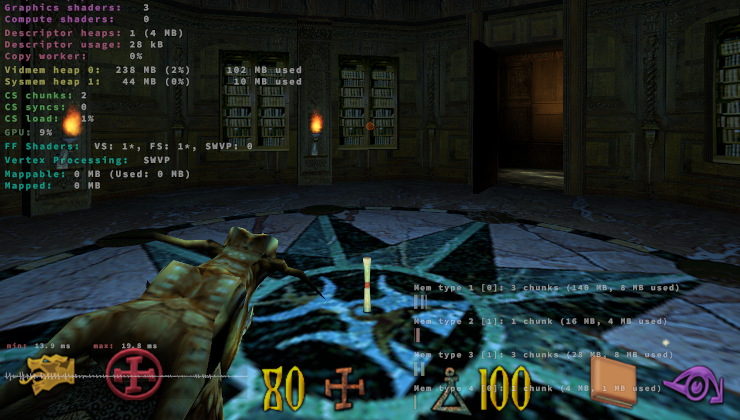Raspberry Pi OS has been through a big update recently, which fans of the little devices need to be aware of for future setups and upgrades.
First, in the name of security, the default "pi" user is no more. Why? Well, attacks are on the rise, and since the RPi is incredibly popular, it is obviously a target. Removing the default name is just another small barrier that anyone doing something naughty has to overcome, as they might now need your username directly too. That, and new legislation from some countries that forbid having default login info. Seems like a sane change regardless, so their install wizard (that's now required to use) was upgraded to create a proper user account.
On top of that, hassles of Bluetooth during setup should be a thing of the past. Now, it will tell you to set your devices into pairing mode and sync them up.
As for the future: say hello to Wayland. Everywhere it is beginning to replace X and the Raspberry Pi OS has been making preparations on that front too. They switched to mutter to help with this, and now you can also test out a very experimental version of RPi OS on Wayland (but they don't recommend it yet), with many features not yet hooked up fully or at all. Plenty of it is also running under XWayland, so it's not a "pure" Wayland implementation of the desktop.
Quoting: GuestI decided to try this last night. And failed miserably because I dist-upgraded to bullseye with all the latest & greatest, after which wifi no longer functioned, along with a half a dozen other problems. If you're going try all this, install from scratch with one of the images.Yeah their upgrade process could do with improvements. Last time I did the audio didn't work, took half an hour to find a fix <_<
The Wayland component seemed just fine for what little I tested with it. Then I decided once again that Mutter wasn't for me (personal choice, I find it incredibly annoying because I can't alt+left mouse to draw a window, or alt+right mouse to resize it) and thought I'd give a few other things a go....after which I promptly messed things up again, and now need to install from scratch again!
(back to xfce4 on the next try)
Quoting: GuestThen I decided once again that Mutter wasn't for me (personal choice, I find it incredibly annoying because I can't alt+left mouse to draw a window, or alt+right mouse to resize it)That's not a mutter limitation. Works fine in Gnome/X11. So it's either not configured or not working for Wayland. Wouldn't be surprised if it was just the configuration though since Gnome devs don't seem to like usability.
As for the topic - in my opinion it's better to use Canonical's image for RPi, it had working Wayland for at least a year (and you'll get smooth upgrades as a bonus). There is also Armbian that cover more than 100 boards, and now RPi too. There is also UEFI implementations for several boards (such as RPi4B and ROCKPro64) that allow to boot aarch64 installation media from USB flash drive that was intended for usage with UEFI-based boards (such as Avatek Ampere Alta Workstation and HoneyComb LX2 Workstation).
Quoting: RussianNeuroMancerHonestly, it's a pity that RPi get all the fame while there is much more interesting boards with features like NVME support (many RK3399-based boards, such as Libre Computer Renegade Elite or NanoPC-T4) onboard USB Type-C or, you know, TWO TIMES HIGHER PERFORMANCE (like ODROID-N2+) is mostly unnoticed by media.Rpi are a bit lacking in h/w features i agree (lack of dedicated channels for i/o is a real pain) but to be fair everything you've listed is 2x the cost of a pi.
A good chunk of the appeal of a pi for me is the not bothering too much if i accidentally blow it up (mainly use the zero modules these days)
I simply don't have too many needs for a £100 device that will do basic tasks.
Quoting: ninjasftwmainly use the zero modules these daysTopic of this article is desktop feature, and devices I talking about is proper Linux workstations for just £100 (for instance Station P1 cost is 107 GBP; that include case, PSU, WiFi antenna, eMMC storage).
device that will do basic tasks
And even for basic tasks there is other interesting alternatives (for example [FriendlyElec](https://www.friendlyelec.com/index.php?route=product/category&path=69&sort=p.price&order=ASC) have wide range of products for such as use-cases).
Quoting: RussianNeuroMancerTopic of this article is desktop feature,Sure, if you consider one paragraph at the end defining the topic of the article :wink:
There are always plenty of interesting devices out there. I just don't think that there is a big market for small general purpose Linux (or any OS) machines.
The benefit of Rpi is the ecosystem around it rather than the device. Lots of howtos, lots of other people doing interesting things (same reason why Arduino is popular in spite of lots of micro controller hardware).
It will do enough for most tasks but if you want it as a dedicated desktop machine then there certainly are a number of better options out there.
Of course, the ecosytem of the Raspberry Pi is missing (module camera and stuff... I'd like to try image recognition on such a device, with OpenCV, just for fun :smile: ), but then I have a full-fledged PC, which could maybe be re-used for, say, a dedicated server (Valheim ? :wub: ), or even a small retro-console... Just saying :wink:
Quoting: Liam DaweYeah their upgrade process could do with improvements. Last time I did the audio didn't work, took half an hour to find a fix <_<My desktop machine is a Raspberry Pi 4 and this update kind of broke lxpanel for me - it now only covers a third of my monitor and just randomly cuts off there, and I still haven't figured out what on Earth the problem is, since the settings and config file are identical to before and I haven't found anyone else reporting similar yet (all I get is results for unrelated issues like panel items randomly disappearing).
I use Xfce on everything else, so I might just cut my losses and install that, since lxpanel's fragility in Raspberry Pi OS was already proving to be a random annoyance for a while anyway. :tongue:
Quoting: PenglingHow usable is this with browser Stuff, youtube other video portals and how is the boot time or did youQuoting: Liam DaweMy desktop machine is a Raspberry Pi 4 a
hook up a usb disk ?
Quoting: mt7479How usable is this with browser Stuff, youtube other video portals and how is the boot time or did youI'll preface this by noting that, for a geek, I have surprisingly light daily computing requirements that (internet stuff aside) haven't changed much since my days with the Commodore 64. Word-processing, image-editing, web-browsing, listening to music (usually via YouTube; I don't know about other video sites, as it just hasn't come up), that sort of thing - an 8GB Raspberry Pi 4 is overkill for that, so I'd never use a more powerful machine at my desk anymore because it's wasteful. (The gaming machine in my profile is a GPD Win Max 2021 running Xubuntu, which doubles as my laptop. Portable gaming is my thing, not desk-based gaming.)
hook up a usb disk ?
That said, I just use Class 10 SanDisk microSD Cards with the RPi4 (just 32GB ones due to price and availability - nothing fancy), and I find it perfectly usable, with pretty fast boot-times, though I usually just leave it on since it's so stable and uses a small amount of electricity. I've been very impressed by what it offers for the price, though your mileage may vary. For expanded storage, I just hook up a USB hard-drive when I need it; The speed benefits of SSDs are sometimes a bit lost on someone who grew up with having to wait for data to load in from cassette-tapes, so I don't need any of those yet. :grin:
Also, as mirv notes above, the power-savings are notable. If you've got no need for a super-powerful day-to-day machine for standard practical computing tasks, I would recommend looking into it - they have enough demand for it that they now offer a 1980s-inspired all-in-the-keyboard unit in addition to the traditional bare PCB versions.
Quoting: mt7479they now offer a 1980s-inspired all-in-the-keyboard unit in addition to the traditional bare PCB versions.Yeah, the Raspberry Pi 400 is great for people who just want to use a PC for light tasks. The only thing I'd like for it to have is 8GB. Currently it's only available with 4GB RAM, which is enough for a lot of things, but might not be enough if one expects to have multiple tabs with facebook, YouTube, etc open over the course of hours. Those sites, especially facebook, are bloated and they use more and more RAM in time. To keep this under control, I have my Task Manager (Shift+Esc) open and sorted by Memory footprint. That way I can easily catch the tabs that hog RAM, and take action. :)
Quoting: mt7479they now offer a 1980s-inspired all-in-the-keyboard unit in addition to the traditional bare PCB versions.Thanks to both of your for taking the time to reply :-) The commodore style is just adorable. 4GB Ram is really
a concern, i'm not really much into social media stuff but like to keep a few tabs always running.
A version with 8 Gig ram would really be rad. If prices settle and I can find one I might give it a try either
way. Probably going to install the OS on a USB drive though.
Last edited by mt7479 on 3 May 2022 at 1:16 pm UTC











 How to setup OpenMW for modern Morrowind on Linux / SteamOS and Steam Deck
How to setup OpenMW for modern Morrowind on Linux / SteamOS and Steam Deck How to install Hollow Knight: Silksong mods on Linux, SteamOS and Steam Deck
How to install Hollow Knight: Silksong mods on Linux, SteamOS and Steam Deck